Caperton, WV
Introduction
Text-to-speech Audio
Caperton was a major coal and coke producing site in the New River Gorge. The town was established in 1880 by coal magnates Joseph L. Beury, John Cooper, and George H. Caperton. The site was named after the lattermost founder. Coke was a primary product of Caperton and was produced in 212 ovens near the town. Coal was mined on both sides of the river and high into the hills. This necessitated two feats of engineering: a 1460 foot long inclined track to move coal down the mountain on the north side of the river and an aerial cable system to move coal across the river from the south side. Caperton peaked at over five hundred residents and one hundred structures. However, the town had already lost half its population by 1919, and many more residents moved away as demand for coal subsided over the next twenty years. Caperton was completely abandoned and left to decay in 1954. Little still remains of the once influential town.
Images
Caperton in the 1870s, before the construction of the inclined track.
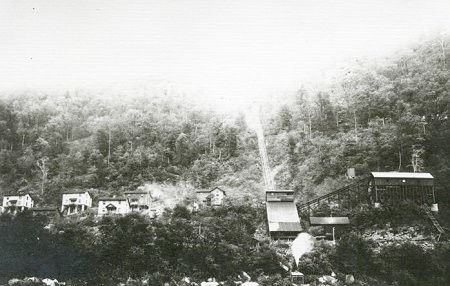
Rounding the bend into Caperton in 1876.
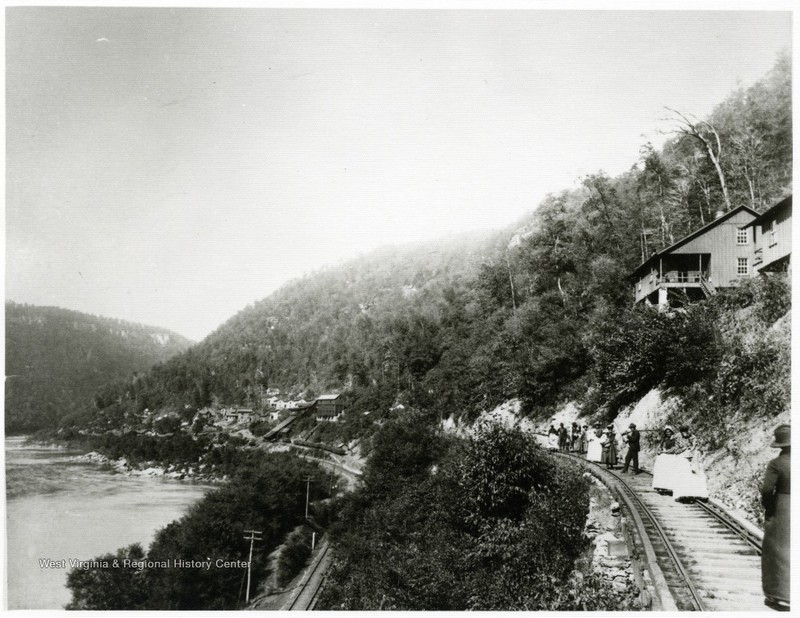
The almost 1500 foot-long inclined track at Caperton brought coal from the top of the mountain to the bottom.
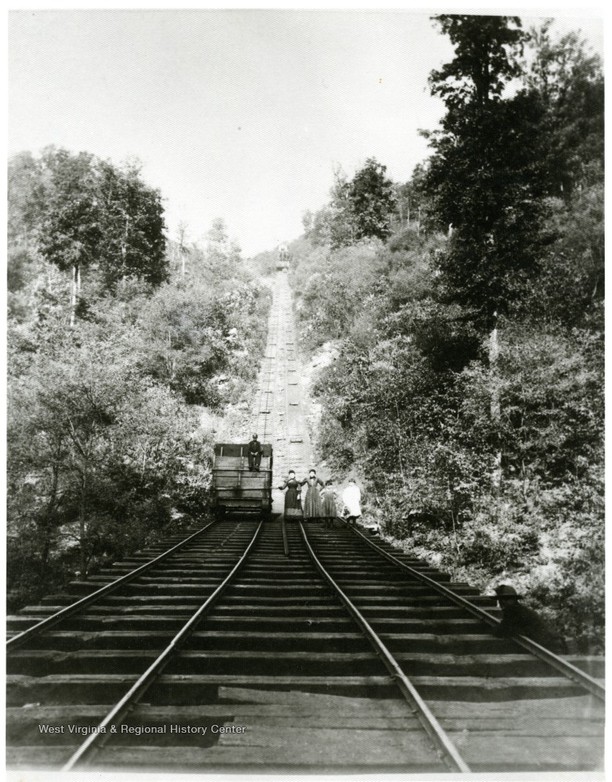
Joseph L. Beury.
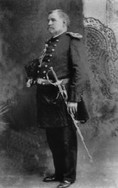
John Cooper.
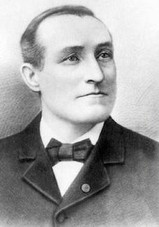
George H. Caperton.

The dilapidated Caperton mansion in the early 1980s. The building was destroyed by a falling tree in 1984.
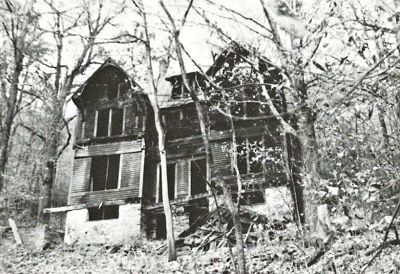
This wooden structure, likely a boarding house, is one of the only extant buildings at Caperton.
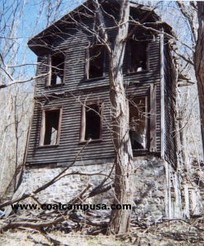
Beehive style coke ovens at Caperton.
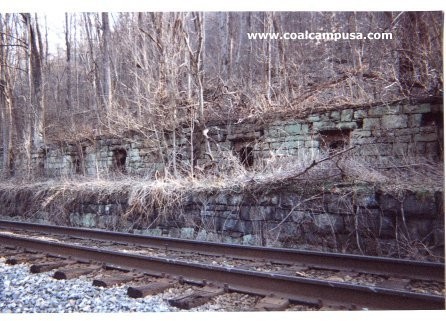
Remains of a monitor car hoist for the inclined track.
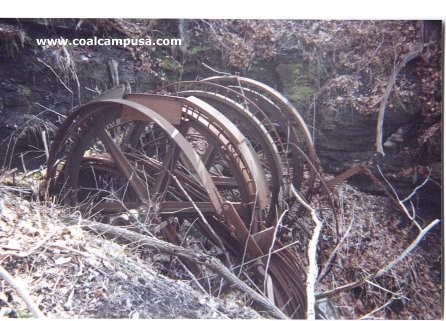
Backstory and Context
Text-to-speech Audio
Caperton was the joint venture of three major New River Gorge industrialists: Joseph L. Beury, John Cooper, and George H. Caperton. All three of these men were early movers in the area, with each having arrived prior even to the completion of the Chesapeake and Ohio (C&O) Railroad. Caperton began as a small temporary camp for the nearby Fire Creek seam coal mine, which was opened in 1880. The camp was initially known as Ellen or Elm but it soon acquired a permanent name — Caperton. The settlement was named after George H. Caperton in recognition of his founding and managing the site. The New River Coke Company was the biggest investor in the area after its initial development and the company opened a second and third mine in Caperton and across the river, respectively. In part thanks to this, Caperton grew quickly in the last two decades of the nineteenth century and by 1899, there were 526 residents.
Most of Caperton’s residents worked in one of the three mines near the settlement. While the mining itself was standard for its time, Caperton’s tipple was a unique piece of engineering. The farthest mine was over one thousand feet up the mountain from the tipple. The solution was an almost 1500 foot long inclined plane with monitor cars. Each monitor car consisted of a large iron cylinder ten feet long and four feet in diameter. The cars were mounted on wheels and were hauled up and guided down the mountain by several large engines located near the base of the track. Over four thousand feet of cable was needed to operate the system. Another cable system transported buckets of coal aerially from the mine across the river from Caperton. This rig resembled the haulage system used at Royal and required an impressive eighteen thousand feet of cable.
Those residents not employed to work at the mines or tipple worked at the coke ovens. There were 212 coke ovens at Caperton. The beehive style ovens were terraced into the hills and ran day and night. The excessive quantity of ovens suggests that Caperton processed coal from other nearby towns in addition to handling the coal mined in closer proximity. Both miners and oven operators in Caperton were active in advocating for labor rights. The New River’s largest assembly of the Knights of Labor was established in the town just a few years after its inception. Known as National Trade Assembly 135, the organized workers were instrumental in stirring other coal towns throughout the gorge to action, though ultimately no major reform occurred during the coal boom.
In the 1910s, Caperton began to expand across the river into a settlement that became known as South Caperton. A five hundred foot suspended pedestrian bridge linked the two towns in 1915. The merged Caperton was an example of a relatively large coal town in the New River Gorge. The town likely consisted of over one hundred buildings. Most of these structures were employee houses built by the New River Coke Company on the south side of the river. The houses cost one dollar per room per month, one dollar for electricity, and two dollars for coal, which was used for both heating and cooking. Other homes were privately constructed for managers and important mine personnel. George H. Caperton himself built his family mansion in town. A variety of other buildings served the general community. Workers could purchase essential items and groceries at the company store, which was next to a boarding house for visiting workers and mine staff. A post office was Caperton’s only link to the outside world other than physically leaving via the C&O railroad. Finally, a school and church rounded out public facilities, though they were racially segregated to be white only.
By 1919, Caperton was already suffering from the decline of the coal industry. The population was 250 in this year, which was half of the population just twenty years prior. The local mines continued to produce coal on a limited basis after 1920 but opportunities dwindled considerably. The mines at Caperton closed completely in the late 1940s or early 1950s. The town itself hung on for a few more years, until the school was closed in 1952. Most residents moved away, though a few stubborn holdouts waited until the post office also closed in 1954. Caperton was completely abandoned soon after. The town was a significant economic location in the New River Gorge and possessed innovative engineering. However, these aspects alone were not enough to save the town, which is slowly being reclaimed by the forest. Only a few crumbling structures and the remains of foundations mark Caperton’s physical impact on the area.
Sources
Beury Monument, National Park Service. February 12th 2021. Accessed June 14th 2021. https://www.nps.gov/places/beury-monument.htm.
Callahan, James M. History of West Virginia, Old and New. Volume 3. American Historical Society, 1923.
Caperton, WV, Coal Camp USA. Accessed June 14th 2021. http://www.coalcampusa.com/sowv/river/caperton/caperton.htm.
Coal Baron - John Cooper Family, Bramwell, WV. Accessed June 14th 2021. https://www.bramwellwv.com/cooper.html.
Conner, Albert Z. George Henry Caperton b. 1828, Caperton Society. Accessed June 14th 2021. https://www.capertonsociety.org/index.php/caperton-history/biographies/27-d-24a-george-henry-caperton-b-1828.
"Death of Pioneer Coal Operator; Col. Jos. L. Beury Passes Away." Bluefield Daily Telegraph (Bluefield) June 4th 1903.
Joseph Beury, National Park Service. January 26th 2021. Accessed June 14th 2021. https://www.nps.gov/neri/learn/historyculture/buery.htm.
King Coal, National Coal Heritage Area & Coal Heritage Trail. Accessed June 14th 2021. https://coalheritage.wv.gov/coal_history/Pages/King-Coal.aspx.
Stahlgren, Lori et al. Historical Archaeological Survey: New River Gorge National River and Gauley River National Recreation Area. Lexington, KY. Kentucky Archaeological Survey, 2007.
Coal Camp USA. Accessed June 14th, 2021. http://www.coalcampusa.com/sowv/river/caperton/caperton.htm.
“Camp and Side Track, New River Coal Company at Caperton, W. Va.” 1876. West Virginia & Regional History Center. Accessed June 14th, 2021. https://wvhistoryonview.org/catalog/002266.
“New River Coal Company Incline at Caperton W. Va.” Ca. 1980. West Virginia & Regional History Center. Accessed June 14th, 2021. https://wvhistoryonview.org/catalog/002285.
The West Virginia Encyclopedia. Accessed June 14th, 2021. https://www.wvencyclopedia.org/articles/476.
Bramwell, WV. Accessed June 14th, 2021. https://www.bramwellwv.com/cooper.html.
Burns, Elizabeth. Findagrave. Accessed June 14th, 2021. https://www.findagrave.com/memorial/6257989/george-henry-caperton.
Ca. 1980. Coal Camp USA. Accessed June 14th, 2021. http://www.coalcampusa.com/sowv/river/caperton/caperton.htm.
Coal Camp USA. Accessed June 14th, 2021. http://www.coalcampusa.com/sowv/river/caperton/caperton.htm.
2001. Coal Camp USA. Accessed June 14th, 2021. http://www.coalcampusa.com/sowv/river/caperton/caperton.htm.
2001. Coal Camp USA. Accessed June 14th, 2021. http://www.coalcampusa.com/sowv/river/caperton/caperton.htm.
